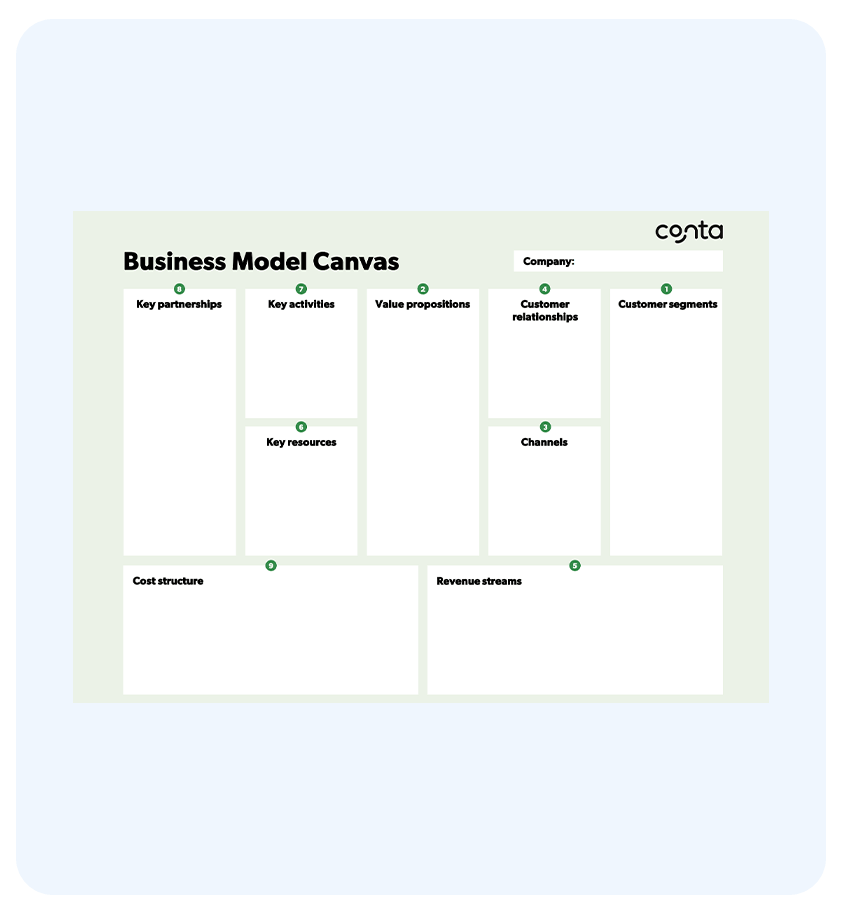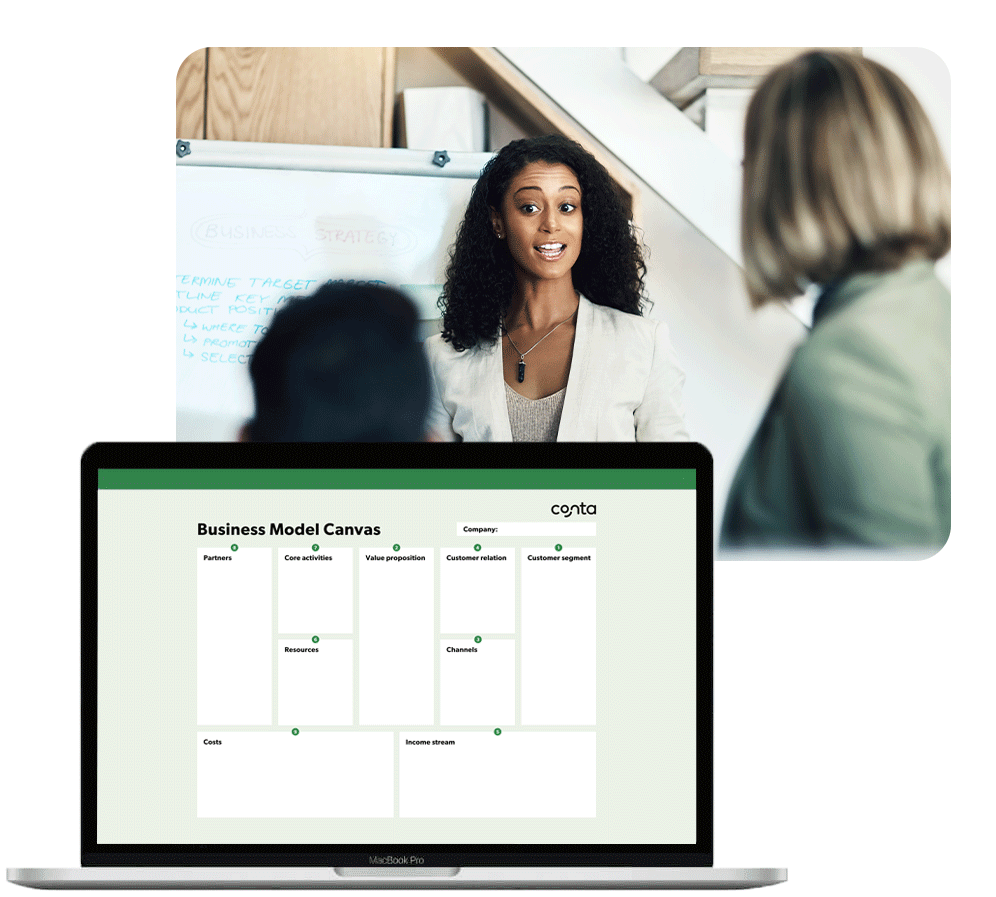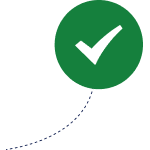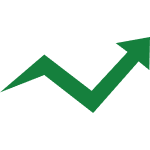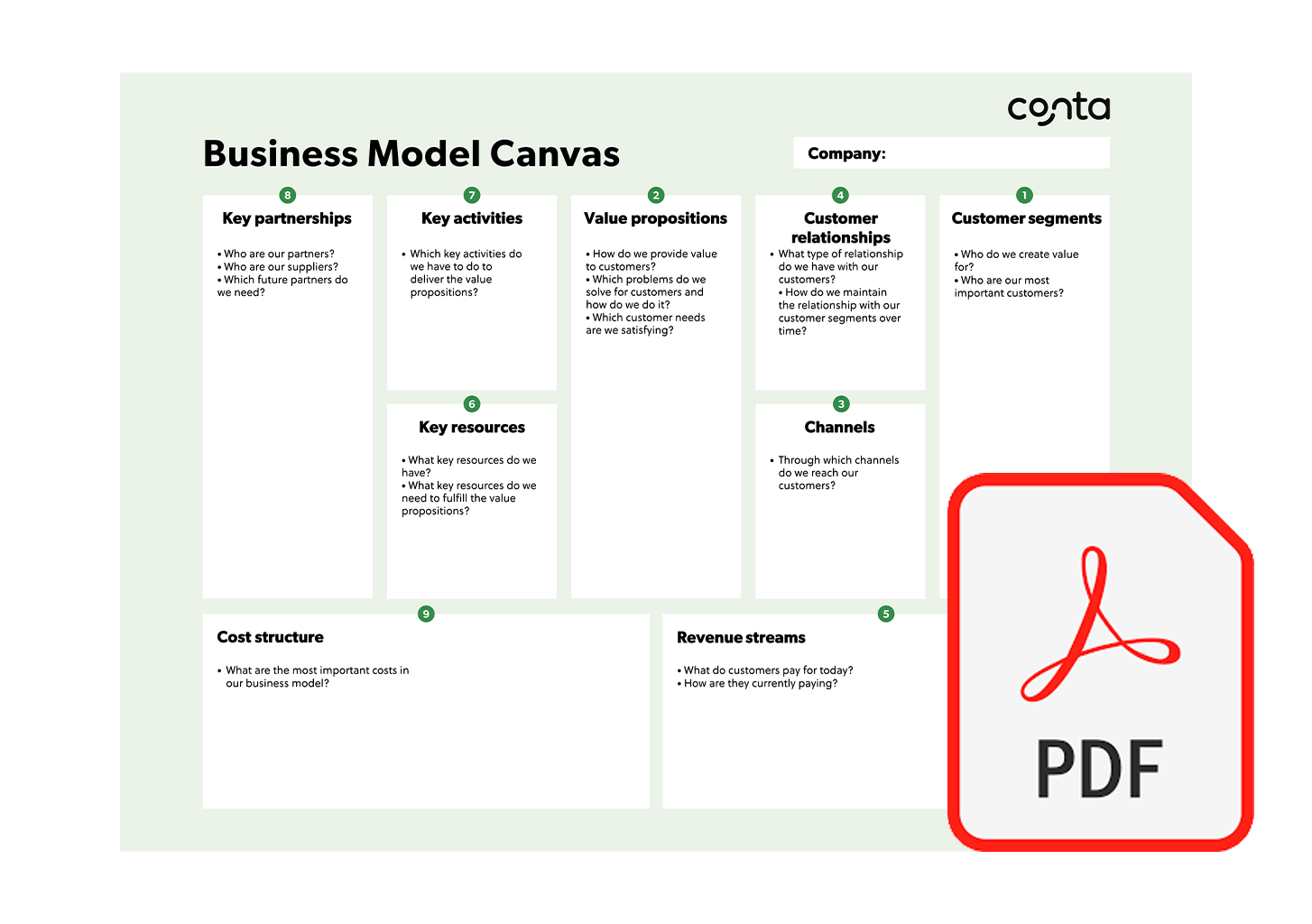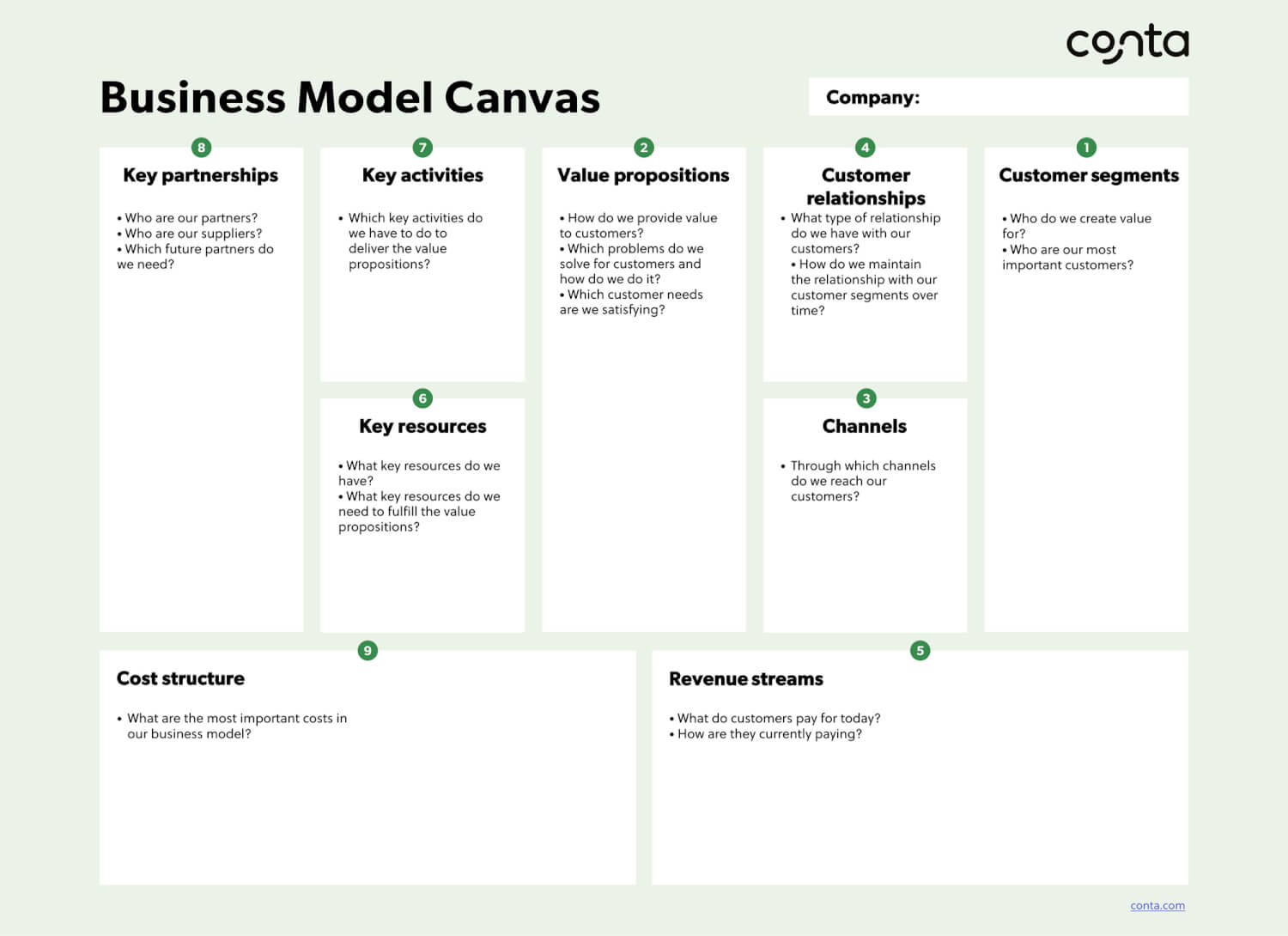These are the 9 building blocks in the template. Here’s how to use them.
1. Customer segments Who are your customers? Are you going to be focusing on B2B or B2C sales or both? What are the characteristics of the businesses and/or people you want to target? How big is the market?
2. Value proposition What value do you provide to your customers? Think about what problem you’re solving for them. If you’re selling a product or service to another business, you can think of it in terms of how you’re helping them achieve their value proposition.
3. Channels How are you going to tell your customers about your value? Which channels are you going to use to reach them: Social media, in-person events, TV, radio, or Google ads? You’ll want to cover several channels your target audience uses.
4. Customer relationships What kind of relationship are you going to have with your customers? Are you meeting them in person, over the phone, or online? You can create a user journey map to map out all the touch points you’ll have with the customers. This will also help you see where you can automate processes, for example, by using AI, setting up auto-replies, or creating helpful content and so on.
5. Revenue streams How will you get paid for the value you provide to the customer? What pricing structure will you have? A flat fee, price per product, subscriptions or a freemium model?
6. Key resources What resources are required to do the key activities in your business? If you run a photography business, the resources could be lighting equipment, studios, cameras, photography courses, and Photoshop licenses.
7. Key activities What activity does your business do to deliver on the value proposition? If you run a photography business, then your key activity will be taking photos. If you run a delivery service, then you’ll be driving a lot. Are you selling your time, your expertise, one or more products, a technical development or something else?
8. Key partnerships Which suppliers do you need to perform your key activities and deliver your value proposition? And who can you outsource work to, in order to save time and resources?
9. Cost structure How much does it cost to perform your key activities and deliver your value proposition? This includes all costs included in your key activities, as well as additional fixed costs such as legal costs and insurance costs. Don’t forget about your time either, that’s valuable too.
